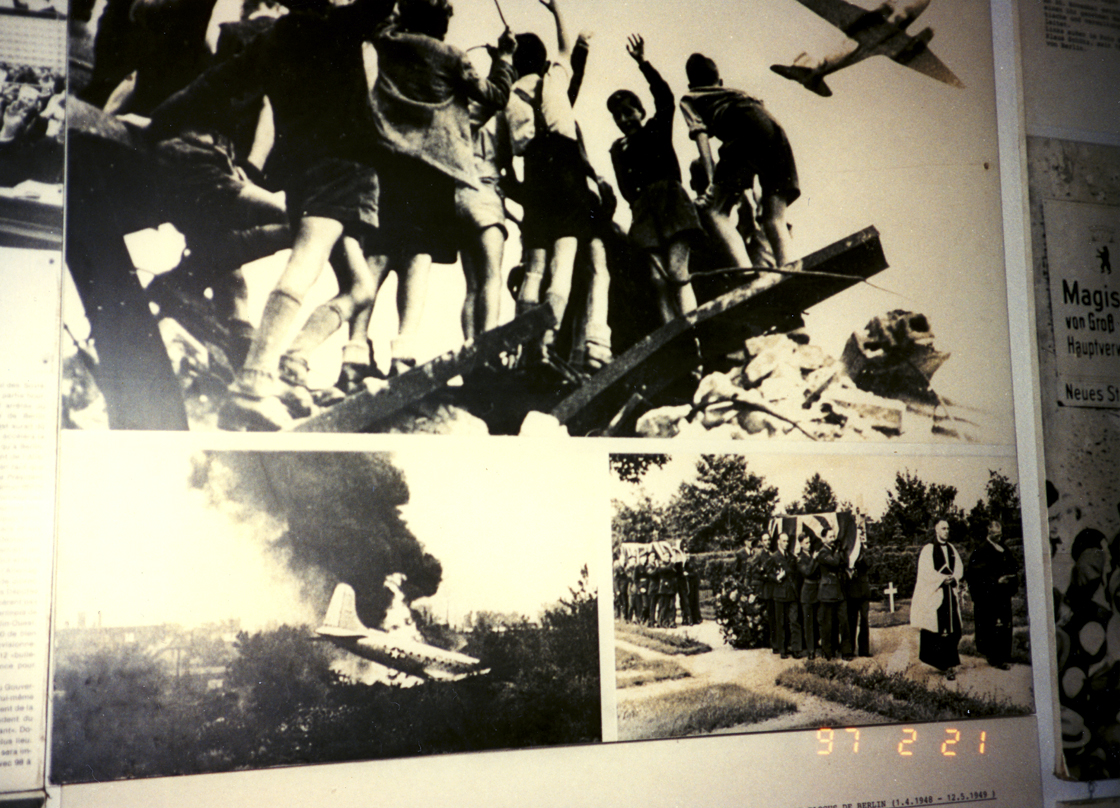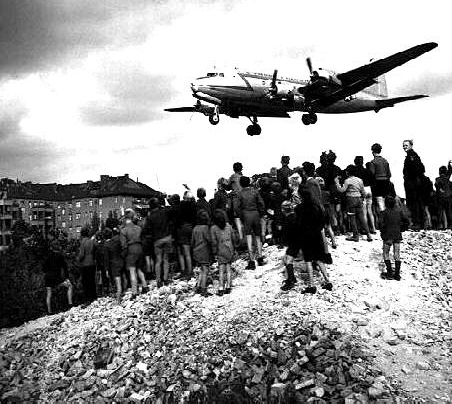
Berlin Airlift

After World War II ended, Germany was in ruins, and the situation in its capital, Berlin, was dire. About 2.5 million Berliners were still living in the war-ravaged city, but food was scarce and shelter was hard to find amid all the rubble. The economy was mostly black market goods at that point.
To begin rebuilding, the Allies split Germany between the U.S., Great Britain and Russia. Berlin was also divided into occupation zones; the Soviets controlled the eastern portion while the west went to the U.S., UK and France.
Unfortunately, the Soviet-Allied alliance deteriorated quickly, and tensions fully erupted by 1948.
On June 24, 1948, Soviet forces blockaded all road, rail and water routes into Berlin’s Allied-controlled areas, stifling the vital flow of food, coal and other supplies. Soviet troop numbers dwarfed those of the Allies, which had drawn down after the war, so there was little the Allies could do about it militarily. But the Soviets couldn’t block Allied airspace, so U.S. and UK forces took to the skies to get supplies to the Allied sectors. On June 26, the U.S. launched Operation Vittles, which the U.K. later joined. It was the biggest aerial resupply mission ever embarked upon. The Allies also imposed their own counter-blockade, restricting trade with East Germany and East Berlin.
More than 2 million Berliners were relying on the aid, which included much-needed food, fuel and medicine. Over time, though, it became more efficient, and the number of airdrops increased. At one point, Air Force and Navy planes were landing at Tempelhof Airport every 45 seconds. On Easter Sunday, April 17, 1949, the constant procession of planes managed to deliver 13,000 tons of cargo, including the equivalent of 600 railroad cars of coal – all in one day! Things weren’t going well for the Soviets. The airlift had been going on for 10 months, and the Allies had proven they could keep it up indefinitely.
The Russians had gained a reputation as bullies because of their blockade. On top of that, an Allied counter-blockade was causing severe shortages in the Russian sectors, leading to fears of an uprising.
The Soviet Union gave in and lifted the blockade on May 11, 1949; however, the airlift itself didn’t end until Sept. 30, just in case the Soviets decided to change their minds.


During his Air Force career, Charles served in the "Berlin Air Lift", also known as "The Berlin Blockade" and "Operation Vittles" from 1948 to 1949. He also served from 1953 to 1954 in Korea at K-9 Air Force Base near Pusan. Charles retired from the USAF in April 1968 with the rank of Technical Sergeant. During his twenty-year career he received the following decorations and service ribbons: National Defense Service Ribbon, AF Good Conduct Medal, AF Longevity Ribbon, Medal for Humane Action with BAD, United Nations Service Ribbon, Korean Service Ribbon, Air Force Commendation Medal, and Small Arms Expert Marksmanship Ribbon.